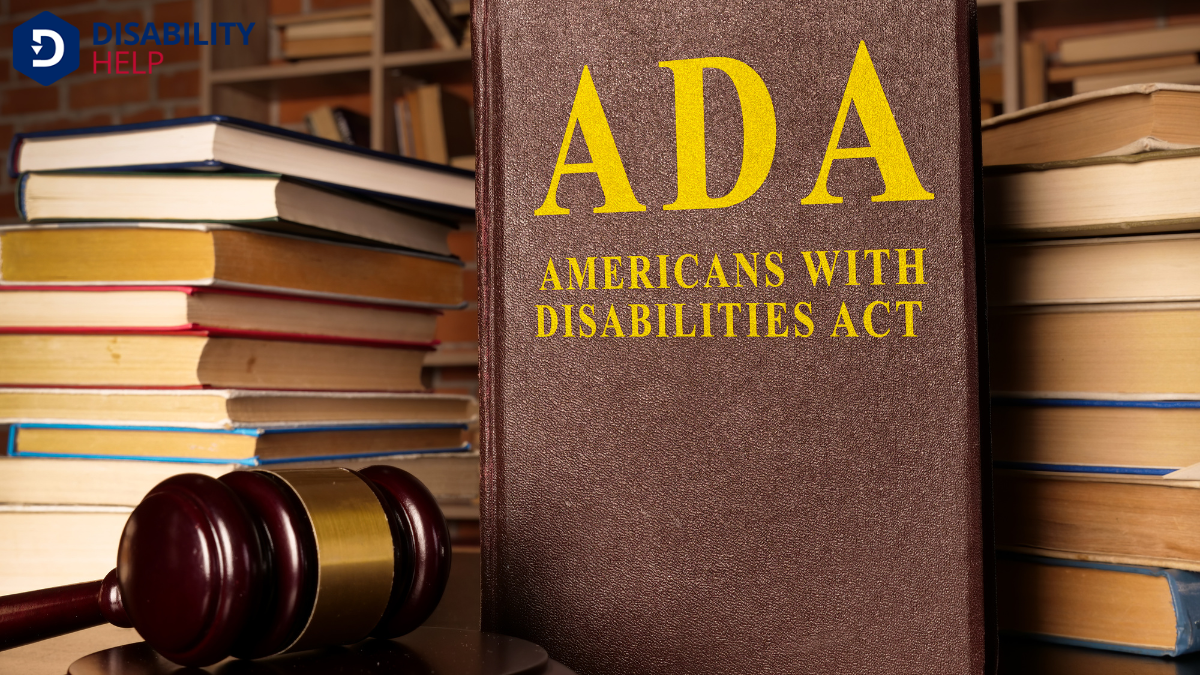When we think about anti-discrimination laws, we often focus on permanent disabilities. But what about temporary conditions? Do they receive the same protections? The Americans With Disabilities Act (ADA)A U.S. law that prohibits discrimination against individuals with disabilities in all areas of publi... provides some insight into this often-overlooked area. Let's explore whether temporary disabilities fall under the ADA's umbrella and what that means for both employees and employers traversing these legal waters.
Key Takeaways
- Anti-discrimination laws like the ADA include temporary disabilities if they significantly limit major life activities.
- Temporary disabilities receive protection under the ADA if they meet the definition of a disability.
- Employers must provide reasonable accommodationsModifications or adjustments in healthcare settings to support patients with disabilities. for temporary disabilities to ensure workplace inclusivity.
- Employees with temporary disabilities have the right to request accommodations under anti-discrimination laws.
- Understanding legal protections empowers employees to advocate for their rights regarding temporary disabilities.
Understanding Temporary Disabilities
Although often overlooked, temporary disabilities play an essential role in our understanding of disability as a whole. They remind us that anyone can experience a period where they’re unable to perform tasks they usually take for granted.
Whether due to an injury, surgery, or illness, these conditions disrupt daily life and require adjustments. By acknowledging temporary disabilities, we gain empathyThe ability to understand and share the feelings of another, particularly important in understanding... and insight into the broader disability community.
We can better appreciate the challenges faced by those with permanent disabilities and recognize that accessibilityThe design of products, devices, services, or environments to be usable by people with disabilities.... and inclusionThe practice of creating environments in which any individual or group can be and feel welcomed, res... matter for everyone.
Temporary disabilities challenge us to rethink our environments and systems. They teach us that disability isn't about permanence; it’s about the experience of traversing the world differently, if only for a while.
Key Provisions of the Americans With Disabilities Act

Recognizing the profound impact of temporary disabilities, we see the importance of legal frameworks that protect all individuals with disabilities, whether temporary or permanent.
The Americans With Disabilities Act (ADA) plays a vital role in guaranteeing equal rights. It prohibits discrimination in various areas such as employment, public services, and accommodations. Under the ADA, employers must provide reasonable accommodations unless it causes undue hardshipA legal concept that refers to significant difficulty or expense imposed on an employer or service p.... This might include modified work schedules or accessible facilities.
Public entities must guarantee services are accessible, while private businesses must remove barriers where feasible. By fostering inclusivity, the ADA helps us understand that temporary disabilities deserve attention and protection.
It’s about guaranteeing everyone has equal opportunities, regardless of the duration of their disability.
Defining Disability Under the ADA
As we explore the definition of disability under the ADA, it's important to understand its broad scope, which includes both temporary and permanent conditions.
We'll examine how the ADA's criteria apply to various disabilities and what this means for individuals facing temporary impairments.
ADA Disability Definition Scope
The ADA's definition of disability is a pivotal aspect of understanding who qualifies for protection under this important law. It defines disability as a physical or mental impairmentA loss or abnormality of a body structure or function, whether physical, mental, or sensory, often a... that greatly limits one or more major life activities.
But what does "greatly limits" mean? It means the impairment considerably restricts our ability to perform tasks central to daily life, like walking, seeing, or learning.
We must also consider how the ADA covers individuals with a history of such impairments, or who are perceived as having them. This broad scope guarantees that even those who mightn't currently experience limitations are protected from discrimination.
Temporary vs. Permanent Disabilities
While many of us might assume that the ADA primarily protects those with permanent disabilities, it actually extends its protections to certain temporary disabilities as well.
Let's clarify what this means. The ADA defines a disability as a physical or mental impairment that greatly limits one or more major life activities. This definition doesn't specify the duration of the impairment, which means that even temporary conditions, if severe enough, can qualify.
For instance, a broken leg mightn't seem like a long-term issue, but it could markedly impact daily activities and consequently be covered by the ADA.
Understanding this distinction helps us recognize that the law acknowledges the challenges faced by individuals with temporary impairments and guarantees they receive necessary accommodations and protections.
How Temporary Disabilities Are Viewed Legally
When it comes to legal perspectives on temporary disabilities, we often find ourselves traversing a complex landscape. The law's interpretation of disability can be murky, especially when the condition isn't permanent. Typically, legal definitions focus on substantial limitations to major life activities.
However, temporary disabilities, like a broken leg or a short-term illness, sometimes fall into a gray area.
The Americans with Disabilities Act (ADA) provides some guidance but doesn’t explicitly define temporary disabilities. Instead, it emphasizes that each case should be evaluated individually.
We must consider how the condition affects daily life activities, even if it's short-lived. By understanding these nuances, we’re better equipped to grasp how temporary conditions might fit within existing anti-discrimination frameworks.
Case Studies and Legal Precedents

Let's explore how landmark court decisions have shaped the coverage of temporary disabilities under anti-discrimination laws.
Together, we'll examine key cases that have set important precedents, influencing how temporary conditions are treated in the legal landscape.
These cases help us understand the protections available and the evolving interpretation of disability rightsThe legal and human rights afforded to individuals with disabilities, often the focus of advocacy an....
Landmark Court Decisions
Throughout history, landmark court decisions have profoundly shaped the landscape of anti-discrimination laws, particularly concerning temporary disabilities.
These decisions serve as pivotal guides in understanding how such laws are applied. Let’s examine some key cases:
- Sutton v. United Air Lines, Inc. - This case questioned whether temporary impairments could be regarded as disabilities under the Americans with Disabilities Act (ADA).
- Toyota Motor Manufacturing, Kentucky, Inc. v. Williams - Here, the court explored the definition of "disability," emphasizing the need to assess the impact on major life activities.
- Bragdon v. Abbott - This decision underscored that even asymptomatic conditions might qualify as disabilities if they limit major life activities.
- EEOC v. Chevron Phillips Chemical Co. - The court reinforced protections for individuals with temporary disabilities, emphasizing fair treatment in the workplace.
These cases highlight the evolving understanding of disability rights.
Temporary Disability Coverage
While examining temporary disability coverage, it’s essential to explore case studies and legal precedents that have shaped the current legal framework.
We find that cases like *Spivey v. Beverly Enterprises, Inc.* highlight the nuances of ADA coverage. The court held that short-term impairments could be considered disabilities if they substantially limit major life activities.
Meanwhile, *Summers v. Altarum Institute* reinforced this by ruling that temporary conditions requiring a long recovery could fall under ADA protection.
These cases show that the legal landscape isn't rigid; it evolves with each ruling. By understanding these precedents, we can better navigate and advocate for rights under anti-discrimination laws.
Let’s continue to explore how these legal interpretations affect our understanding and application of temporary disability coverage.
Employer Obligations and Responsibilities
When it comes to employer obligations and responsibilities under anti-discrimination laws, it's essential that we confirm compliance to foster an inclusive workplace.
We must understand that temporary disabilities deserve thoughtful consideration and action.
Employers should:
- Identify Accommodations: Assess and provide reasonable accommodations tailored to the employee's temporary needs, enabling them to perform their duties effectively.
- Communicate Openly: Maintain open lines of communication with employees about their needs and any modifications to their work environment or schedule.
- Educate Staff: Offer training to all employees about the importance of inclusivity and the legal frameworks that protect temporary disabilities.
- Review Policies: Regularly evaluate and update company policies to confirm they align with current anti-discrimination standards and are effectively implemented.
Employee Rights and Advocacy
Understanding our rights as employees is essential in advocating for ourselves, especially regarding temporary disabilities. We need to know that anti-discrimination laws, such as the Americans with Disabilities Act (ADA), may protect us. These laws require employers to provide reasonable accommodations, even for short-term conditions, if they greatly limit major life activities.
By being informed, we can confidently request necessary adjustments, like modified duties or flexible schedules. AdvocacyThe act of arguing in favor of, supporting, or defending the rights and interests of individuals or ... starts with open communication. Let's document our medical needs and discuss them with HR or our supervisors.
Knowing our rights helps us address any resistance we might face. It's our responsibility to stay informed and assertive. By doing so, we not only protect ourselves but also contribute to a fairer workplace for everyone.
Creating Inclusive Work Environments

To create truly inclusive work environments, it's essential that we all take proactive steps to foster a culture of acceptance and support.
By doing so, we can guarantee that everyone, including those with temporary disabilities, feels valued and empowered.
Here’s how we can make this happen:
- Educate Ourselves: Let’s familiarize ourselves with the challenges faced by employees with temporary disabilities to better understand their needs.
- Communicate Openly: Encourage open dialogue where employees feel safe sharing their experiences and needs without fear of judgment.
- AdaptA grassroots disability rights organization in the U.S. that focuses on promoting community-based se... Workspaces: Make necessary adjustments to workspaces and policies to accommodate temporary disabilities, ensuring accessibility.
- Promote Empathy: Cultivate a supportive atmosphere where empathy guides our interactions, fostering a sense of belonging for everyone.
Frequently Asked Questions
How Do Temporary Disabilities Impact Healthcare Insurance Coverage?
Let's explore how temporary disabilities affect our healthcare insurance. When we're temporarily disabled, coverage can vary. We may see changes in policy benefits or premiums. It's essential to review our specific plan details to understand our rights.
Are There Specific Industries More Affected by Temporary Disabilities?
Let's explore how industries like construction and hospitality are more impacted by temporary disabilities. They often require physical tasks, so temporary impairments can disrupt workflows. By understanding this, we can better address workplace accommodations together.
Can Temporary Disabilities Influence Job Performance Evaluations?
We must consider how temporary disabilities can indeed impact job performance evaluations. When evaluating performance, we should guarantee fairness and understanding, recognizing that temporary conditions might affect an individual's capabilities without reflecting their overall potential.
How Do Temporary Disabilities Affect Remote Work Arrangements?
Let's explore how temporary disabilities impact remote work. They can necessitate adjustments in our work environment and schedule. It's essential for us to communicate clearly with employers to guarantee we receive the support we need.
Are There Tax Implications for Employers Accommodating Temporary Disabilities?
Let's explore tax implications for accommodating temporary disabilities in the workplace. We need to know if offering these accommodations impacts employer taxes. Consulting a tax professional can clarify potential deductions or credits available for such accommodations.
Conclusion
To summarize, we should all recognize that temporary disabilities can indeed fall under the protection of the ADA when they greatly limit major life activities. As employers and employees, let’s commit to fostering inclusive workplaces by understanding our rights and responsibilities. By doing so, we not only comply with the law but also create a supportive environment where everyone can thrive. Together, we can guarantee fair treatment and equal opportunities for individuals with temporary disabilities.






